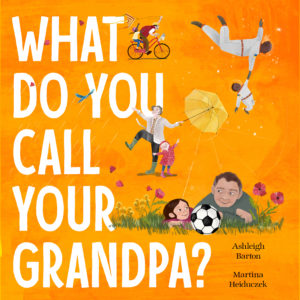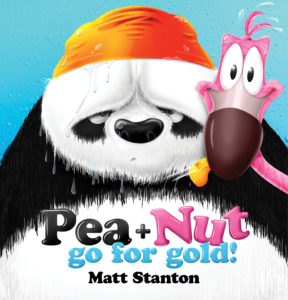Some months are definitely easier than others to find books to fall in love with – and August is definitely one of those months! The children’s books I can’t wait to share with you for August are all heavy on visual literacy (probably my favourite area of teaching; there’s so much to look at, and it has such a huge impact on our day-to-day lives), but are quite different in content.
 The first book is an absolutely delightful picture book, What Do You Call Your Grandpa?. While aimed at students in lower primary, this stunning book could be studied all the way up to lower secondary. On each spread we learn about a different grandpa, and the name he is given in the country he is from. There are grandfathers from as far afield as Kenya, the Philippines and the Northern Territory’s Victoria River region. Along with beautiful illustrations, the clever rhyme scheme encourages proper pronunciation of the names for grandfathers around the world, even those that are unfamiliar. Definitely a book to be shared far and wide!
The first book is an absolutely delightful picture book, What Do You Call Your Grandpa?. While aimed at students in lower primary, this stunning book could be studied all the way up to lower secondary. On each spread we learn about a different grandpa, and the name he is given in the country he is from. There are grandfathers from as far afield as Kenya, the Philippines and the Northern Territory’s Victoria River region. Along with beautiful illustrations, the clever rhyme scheme encourages proper pronunciation of the names for grandfathers around the world, even those that are unfamiliar. Definitely a book to be shared far and wide!
 While Pea + Nut Go for Gold! is also a picture book, it’s a very different proposition to What Do You Call Your Grandpa?. Many of you will remember friends Pea the Panda and Nut the Flamingo from their first book last Christmas. In Go for Gold!, competition between the friends enters the swimming pool, and even more hilarity ensues. Younger children will delight in Pea’s wonderful yellow bikini, and Nut’s ingenious use of pool noodles. Lots of fun to read aloud.
While Pea + Nut Go for Gold! is also a picture book, it’s a very different proposition to What Do You Call Your Grandpa?. Many of you will remember friends Pea the Panda and Nut the Flamingo from their first book last Christmas. In Go for Gold!, competition between the friends enters the swimming pool, and even more hilarity ensues. Younger children will delight in Pea’s wonderful yellow bikini, and Nut’s ingenious use of pool noodles. Lots of fun to read aloud.
 Finally, in a bit of a left turn, we have Usborne Graphic: Macbeth. If you haven’t discovered the Usborne Graphic series yet, it’s great! The series takes literary classics – everything from Hamlet to Alice in Wonderland to Dracula – and turns them into graphic novels. The latest is Macbeth, and this famous play (and personally, my favourite Shakespeare) is now accessible to even more readers. This would be great to use with students who struggle with Shakespeare, or as a way of introducing the play. While much of the dialogue has been modernised, famous and important lines have been retained, and will help to familiarise students with Shakespearean language.
Finally, in a bit of a left turn, we have Usborne Graphic: Macbeth. If you haven’t discovered the Usborne Graphic series yet, it’s great! The series takes literary classics – everything from Hamlet to Alice in Wonderland to Dracula – and turns them into graphic novels. The latest is Macbeth, and this famous play (and personally, my favourite Shakespeare) is now accessible to even more readers. This would be great to use with students who struggle with Shakespeare, or as a way of introducing the play. While much of the dialogue has been modernised, famous and important lines have been retained, and will help to familiarise students with Shakespearean language.
Read of the Month – The Henna Artist
The Henna Artist by Alka Joshi is more than one woman’s story; it’s the story of a country in transition. Set in 1950s Jaipur, henna artist Lakshmi moves among the city’s elite, who are joyous at India’s newly won independence. Lakshmi’s greatest desire is for financial independence – owning her own home is an enormous summit she has almost reached, when her life is turned upside down. After 13 years, the husband she left behind in a small village has tracked her down. And accompanying him is Lakshmi’s newly orphaned sister … a sister she had no idea existed.
Lakshmi continues to pursue the path she has planned. Not surprisingly, that path begins to wander somewhat and, eventually, she is forced to reconsider what it was she was trying to achieve.
Despite operating in a very different time, place and society, Lakshmi is an incredibly universal character. The thing she wants most in the world is the freedom to live her life as she sees fit. She is also incredibly pragmatic about her own place, and the place of women more broadly, in the society in which she operates.
The Henna Artist is a fascinating insight into a time and place that I wasn’t very familiar with, and the way in which Joshi weaves together Lakshmi’s search for true independence along with the story of India’s growing surety as an independent nation is skilful and insightful. In many ways, with its detail about the lives of Indians in the




